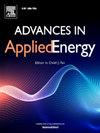Revealing drivers of green technology adoption through explainable Artificial Intelligence
IF 13.8
Q1 ENERGY & FUELS
引用次数: 0
Abstract
Effective governance of energy system transformation away from fossil resources requires a quantitative understanding of the diffusion of green technologies and its key influencing factors. In this article, we propose a novel machine learning approach to diffusion research focusing on actual decisions and spatial aspects complementing research on intentions and temporal dynamics. We develop machine learning models that predict regional differences in the accumulated peak power of household-scale photovoltaic systems and the share of battery electric vehicles from a large set of demographic, geographic, political, and socio-economic features. Tools from explainable artificial intelligence enable a consistent identification of the key influencing factors and quantify their impact. Focusing on data from German municipal associations, we identify common themes and differences in the adoption of green technologies. Specifically, the adoption of battery electric vehicles is strongly associated with income and election results, while the adoption of photovoltaic systems correlates with the prevalence of large dwellings and levels of global solar radiation.
通过可解释的人工智能揭示绿色技术采用的驱动因素
对能源系统从化石资源转型的有效治理需要对绿色技术的扩散及其关键影响因素进行定量理解。在本文中,我们提出了一种新的机器学习方法来进行扩散研究,重点关注实际决策和空间方面,补充了意图和时间动态的研究。我们开发了机器学习模型,从大量的人口、地理、政治和社会经济特征中预测家庭规模光伏系统累积峰值功率的区域差异和电池电动汽车的份额。来自可解释人工智能的工具能够一致地识别关键影响因素并量化其影响。关注德国市政协会的数据,我们确定了采用绿色技术的共同主题和差异。具体来说,电池电动汽车的采用与收入和选举结果密切相关,而光伏系统的采用与大型住宅的普及和全球太阳辐射水平有关。
本文章由计算机程序翻译,如有差异,请以英文原文为准。
求助全文
约1分钟内获得全文
求助全文

 求助内容:
求助内容: 应助结果提醒方式:
应助结果提醒方式:


